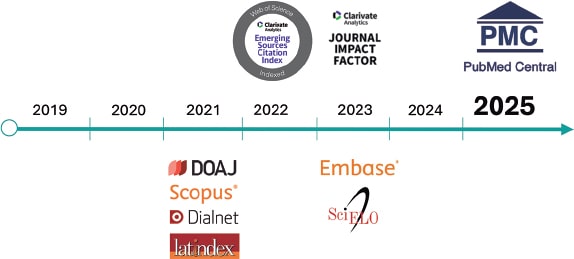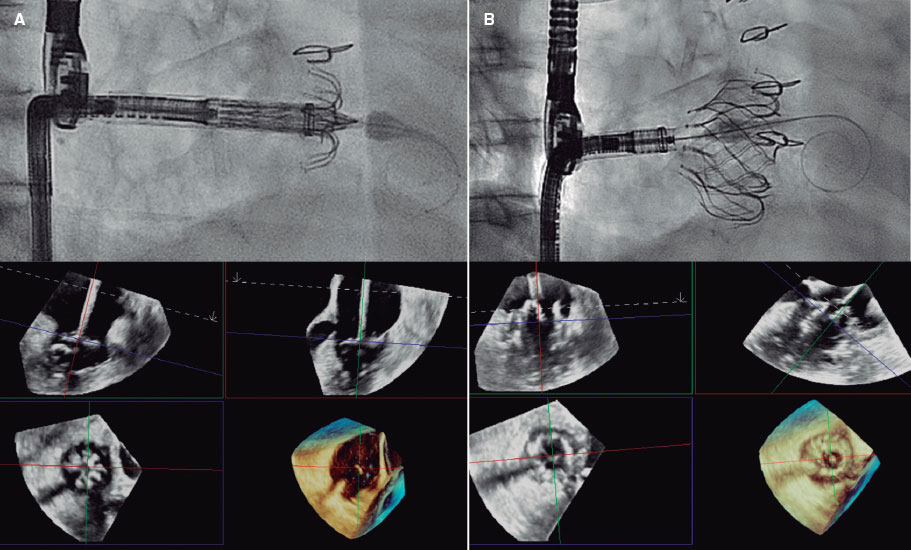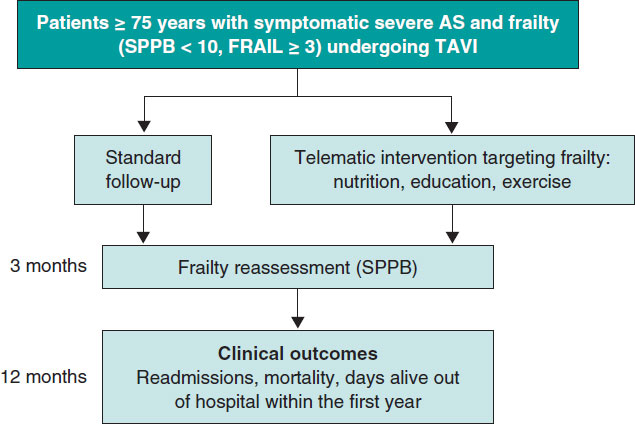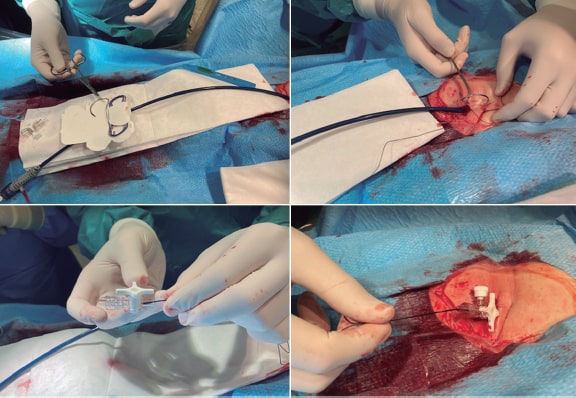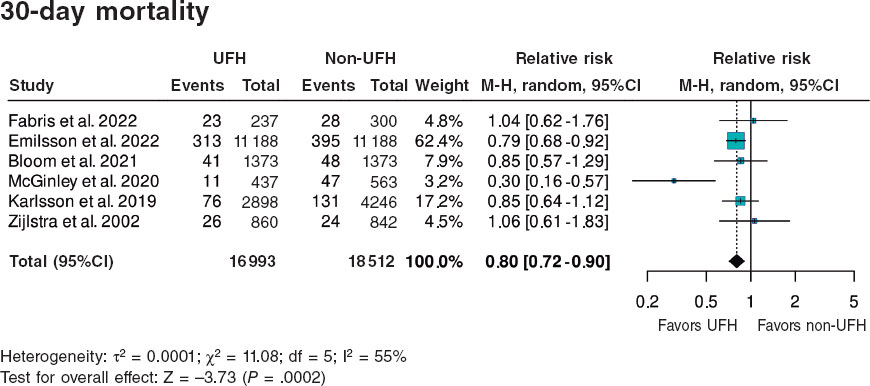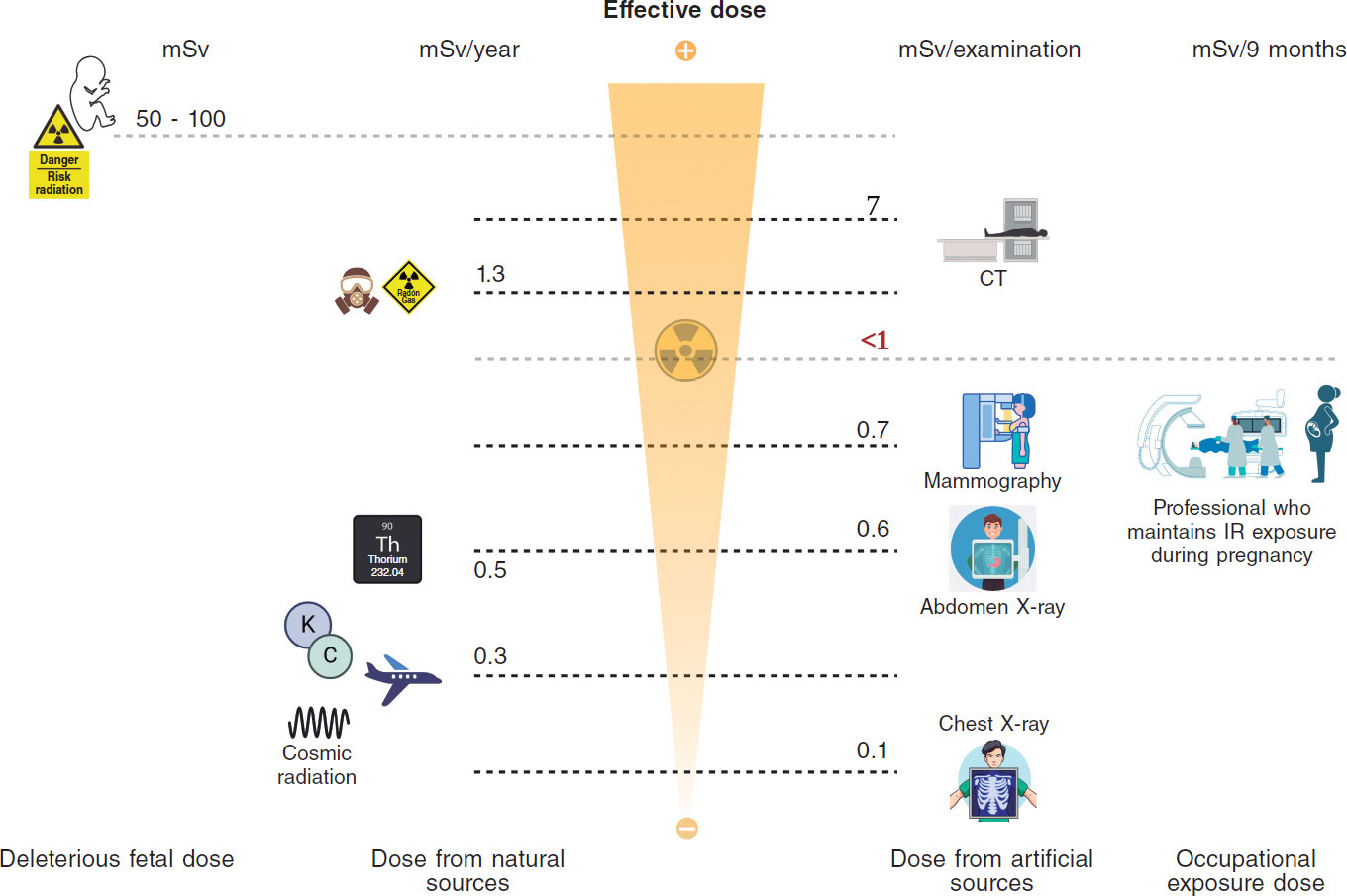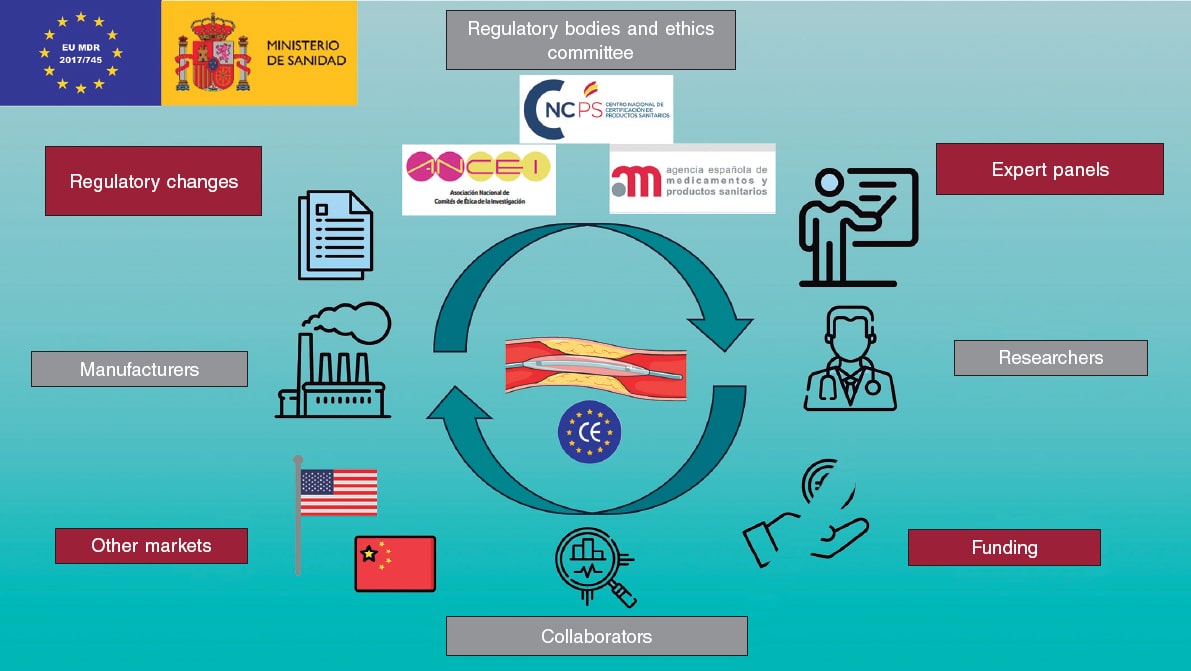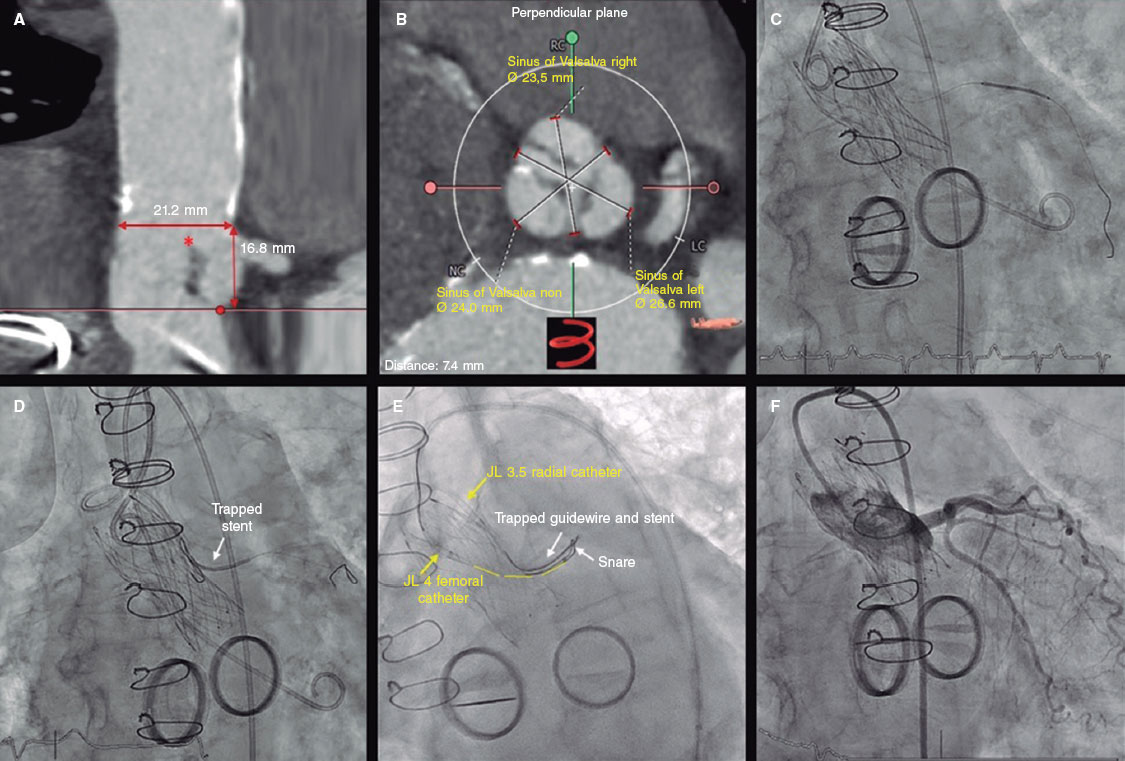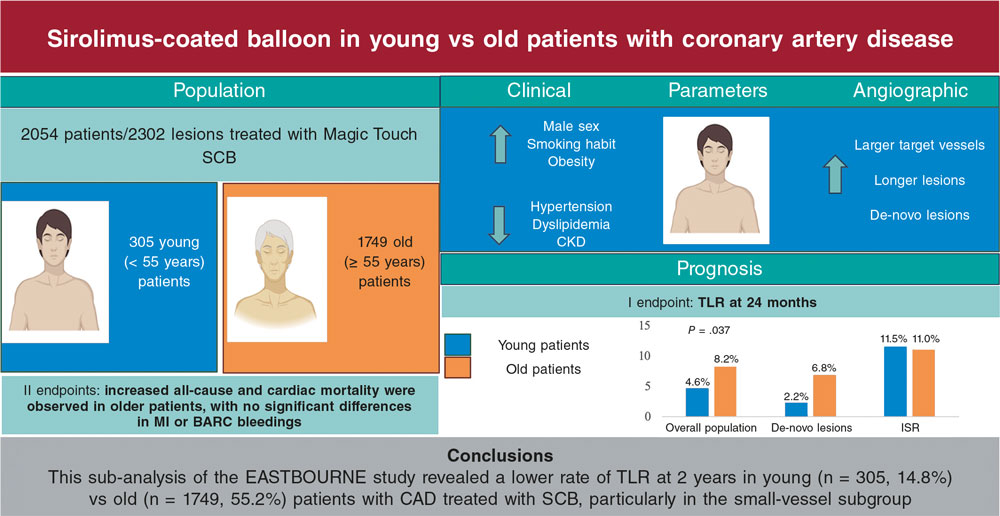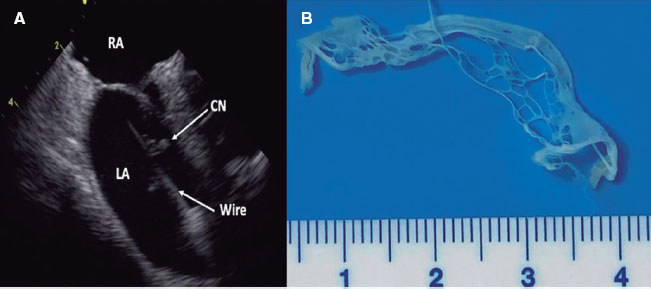Article
Debate
REC Interv Cardiol. 2019;1:51-53

Debate: MitraClip. The heart failure expert perspective
A debate: MitraClip. Perspectiva del experto en insuficiencia cardiaca
aServicio de Cardiología, Hospital Clínico Universitario de Valencia, INCLIVA, Universidad de Valencia, Valencia, Spain bCIBER de Enfermedades Cardiovasculares (CIBERCV), Spain
Related content
Debate: MitraClip. The interventional cardiologist perspective
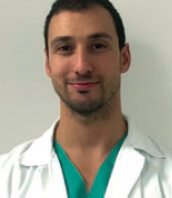
QUESTION: Compared to the pressure guidewire what possible advantages does coronary angiography-derived fractional flow reserve (FFRangio) have and what is the current clinical evidence?
ANSWER: Guidewire pressure-derived fractional flow reserve (FFR) is the most highly validated physiological index for the analysis of coronary stenoses.1,2 Despite the large scientific evidence supporting its prognostic impact on the assessment of patients with coronary artery disease and great cost-effective ratio, its use, though on the rise, is still not very popular.3 And this is so even despite the fact that only one third of the intermediate angiographic lesions considered significant through visual assessment are eventually confirmed as significant at the physiological analysis.4,5 The main reasons are that performing the FFR requires advancing a guidewire—which is not the best thing to do from the standpoint of maneuverability—through a coronary artery that has some degree of atheromatous disease. Also, to assess hyperemia, it requires the administration of drugs that can have undesirable effects effects.6
In order to solve these issues, easier non-hyperemic indices such as the instantaneous wave-free ratio (iFR), the diastolic pressure ratio (dPR), and the resting full-cycle ratio (RFR)7 have been developed. They all avoid using drugs, but require the advancement of an intracoronary guidewire. FFRangio can be performed using different software, such as the quantitative flow ratio (QFR; Medis, The Netherlands) and others in the pipeline like the 3D-CA (HeartFlow, United States) which provides the same information only with the angiography without having to advance the guidewire or use drugs, which is precisely their main advantage. Similarly, there are different software available to perform this analysis using computed tomography that have already generated evidence;8 they are based on 3D reconstruction and computational fluid dynamics.9 They have proved to match the FFR adequately in different contexts10,11 with a cut-off value of 0.80, an apparently higher accuracy of iFR,12,13 and an adequate intra- and inter-observer reproducibility in centralized analyses.14
The FAVOR pilot study,15 that gained the CE marking for the QFR software back in 2017, recruited 88 patients with stable coronary artery disease and non-ostial lesions, and proved the good correlation between the QFR and the FFR. Also, it proved that the values of FFRangio in situations of hyperemia (with adenosine [aQFR]) did not increase diagnostic accuracy compared to measurements without hyperemia (only with the administration of contrast [cQFR]), which means that the use of drugs can be avoided. These results have also been confirmed in a recent meta-analysis conducted by Westra et al.16 that only included prospective registries. It showed he high negative predictive value of FFRangio that would avoid unnecessary delayed procedures.
Q.: Which do you think are the technical limitations of FFRangio?
A.: One in 5 vessels cannot be analyzed accurately with the FFRangio when the study is performed retrospectively, that is, without an optimal angiography based on easy recommendations including 2 projections of the vessel under study with, at least, a 25º difference and a recording at 15 images per second. When performed this way, images can be analyzed more precisely in up to 90% of the vessels. However, the software available is still limited with ostial or bifurcation lesions. Other than the aforementioned, the factor that often slows down a correct analysis is the crossing of vessels in the studied lesion, which explains why when the images are specifically acquired, the possibility of performing the analysis is much higher. As a matter of fact, integrating this type of software online in the catheterization laboratory is essential to obtain FFRangio values and angiographic acquisition simultaneously and correct the latter when inadequate. This is so because with offline analyses the quality of angiography cannot be changed. Another factor that can be misleading and should be taken into consideration is that, although the contour of the vessel is acquired automatically, manual corrections can still be made. To minimize the impact of this subjective factor operators need to have proper training and certification in this technique. Finally, although evidence is scarce on this regard, we should ask ourselves to what extent variations in microcirculation that affect coronary flow (like in the infarct related artery or in stable patients with significant microvascular abnormalities) can also impact the results of the FFRangio analysis. In return, this software asseses the entire length of the vessel, not only individual lesions, to decide what part of the vessel should be treated in cases of tandem lesions to be more precise and effective therapeutically speaking (QIMERA-1, NCT04200469).
Q.: Which should be the most appropriate indications for FFRangio with the current state of evidence and which do you think will be its mid-term indications?
A.: From my own perspective, one of the most practical, efficient, and cost-effective uses will be to assess non-culprit lesions in the myocardial infarction setting.14,17 Although, as I mentioned at the beginning, complete revascularization with pressure guidewire has proven useful in this context, the truth is that when dealing with culprit artery revascularizations the clinical context is often that of an emergency. Therefore, no treatment is administered or physiological assessment of the lesions performed in the remaining vessels. This leads to a second procedure with the resulting risks and costs that, in many cases, can be avoided since FFRangio assessments rules out significance in over 50% of the lesions. Actually, when a second procedure is performed, the most common finding is that, according to the FFR angio, the severity of the stenoses observed in non-culprit arteries often improves compared to the acute phase. As a matter of fact, the QIMERA pilot study14 confirmed that in patients with cQFR values < 0.82 in non-culprit arteries during the first procedure, the delayed procedure could be avoided without assuming any risks.14
Q.: In your opinion, which study or studies would be necessary to bring this technique to the same level as the pressure guidewire? Do you think this will happen anytime soon?
A.: We will probably need several prospective and controlled studies that compare both tools in different clinical settings: infarctions, stable patients, pre- and post-angioplasties, etc. In this sense, our group simply conducted a prospective comparison among different non-hyperemic tools (RFR and QFR versus FFR)—to be published shortly—proving that there is a better correlation between QFR and FFR. Therefore, these strategies that do not require advancing a coronary guidewire for physiological assessment will probably be widely used. However, other technological achievements still need to be made first.
On the other hand, I don’t believe one technique will end up replacing the other in the mid-term. Actually, evidence suggests that a combination of both can be very useful. Thus, with QFR values < 0.75 or > 0.85 it would not make sense to run more physiological tests (avoiding 60% of pressure guidewires). Regarding the gray values in that area a guidewire-based non- hyperemic index may be used, which could reach sensitivity and specificity values of 97%, both consistent with an analysis conducted by our group of over 100 lesions with a 94.5% positive predictive value and a 98.5% negative predictive value. This combined approach would avoid the administration of adenosine to 100% of the patients and minimize the need to advance an intracoronary guidewire. According to the interventional cardiologists surveyed, this is the main setback for the physiological assessment of lesions.18
CONFLICTS OF INTEREST
The center received unconditional research funding from Medis (The Netherlands).
REFERENCES
1. Zimmermann FM, Ferrara A, Johnson NP, et al. Deferral vs. performance of percutaneous coronary intervention of functionally nonsignificant coronary stenosis:15-year follow-up of the DEFER trial. Eur Heart J. 2015;36: 3182-3188.
2. Xaplanteris P, Fournier S, Pijls NHJ, et al. Five-Year Outcomes with PCI Guided by Fractional Flow Reserve. N Engl J Med 2018;379:250-259.
3. Götberg M, Cook CM, Sen S, Nijjer S, Escaned J, Davies JE. The Evolving Future of Instantaneous Wave-Free Ratio and Fractional Flow Reserve. J Am Coll Cardiol. 2017;70:1379-402.
4. Lindstaedt M, Spiecker M, Perings C, et al. How good are experienced interventional cardiologists at predicting the functional significance of intermediate or equivocal left main coronary artery stenoses?Int J Cardiol. 2007;120:254-261.
5. Tonino PAL, De Bruyne B, Pijls NHJ, et al. Fractional Flow Reserve versus Angiography for Guiding Percutaneous Coronary Intervention. N Engl J Med. 2009;360:213-224.
6. Pijls NH, De Bruyne B, Peels K, et al. Measurement of fractional flow reserve to assess the functional severity of coronary-artery stenoses. N Engl J Med. 1996;334:1703-1708.
7. Sen S, Escaned J, Malik IS, et al. Development and Validation of a New Adenosine-Independent Index of Stenosis Severity From Coronary Wave–Intensity Analysis. J Am Coll Cardiol. 2012;59:1392-1402.
8. Min JK, Leipsic J, Pencina MJ, et al. Diagnostic accuracy of fractional flow reserve from anatomic CT angiography. JAMA. 2012;308:1237-1245.
9. Morris PD, Narracott A, von Tengg-Kobligk H, et al. Computational fluid dynamics modelling in cardiovascular medicine. Heart. 2016;102:18-28.
10. Tu S, Barbato E, Köszegi Z, et al. Fractional Flow Reserve Calculation From 3-Dimensional Quantitative Coronary Angiography and TIMI Frame Count. JACC Cardiovasc Interv. 2014;7:768-777.
11. Tu S, Lansky A, Barbato E, et al. Diagnostic Accuracy of Fast Computational Approaches to Derive Fractional Flow Reserve From Diagnostic Coronary Angiography. JACC Cardiovasc Interv. 2016;9:2024-2035.
12. Emori H, Kubo T, Kameyama T, et al. Quantitative flow ratio and instantaneous wave-free ratio for the assessment of the functional severity of intermediate coronary artery stenosis. Coron Artery Dis. 2018;29:611-617.
13. Asano T, Katagiri Y, Chang CC, et al. Angiography-Derived Fractional Flow Reserve in the SYNTAX II Trial:Feasibility, Diagnostic Performance of Quantitative Flow Ratio, and Clinical Prognostic Value of Functional SYNTAX Score Derived From Quantitative Flow Ratio in Patients With 3-Vessel Disease. JACC Cardiovasc Interv. 2019;12:259-270.
14. Cortés C, Rodríguez-Gabella T, Gutiérrez H, et al. Quantitative Flow Ratio en infarto de miocardio para la evaluación de lesiones en arterias no culpables:estudio piloto QIMERA. REC Interv Cardiol. 2019;1:13-20.
15. Tu S, Westra J, Yang J, et al. Diagnostic Accuracy of Fast Computational Approaches to Derive Fractional Flow Reserve From Diagnostic Coronary Angiography. JACC Cardiovasc Interv. 2016;9:2024-2035.
16. Westra J, Tu S, Campo G, et al. Diagnostic performance of quantitative flow ratio in prospectively enrolled patients:An individual patient?data meta?analysis. Catheter Cardiovasc Interv. 2019;94:693-701.
17. Sejr-Hansen M, Westra J, Thim T, et al. Quantitative flow ratio for immediate assessment of nonculprit lesions in patients with ST-segment elevation myocardial infarction-An iSTEMI substudy. Catheter Cardiovasc Interv. 2019;94:686-692.
18. Tebaldi M, Biscaglia S, Fineschi M, et al. Evolving Routine Standards in Invasive Hemodynamic Assessment of Coronary Stenosis. JACC Cardiovasc Interv. 2018;11:1482-1491.

QUESTION: What would you say is the current state of the evidence available on the closure of patent foramen ovale (PFO)?
ANSWER: The closure of PFO to prevent embolic events has been a matter of discussion for cardiologists and neurologists in the therapeutic decision-making process for years. The main reason was the lack of randomized clinical trials showing the efficacy (or inefficacy) of performing this percutaneous procedure in certain patients diagnosed with cryptogenic stroke. After the publication of 3 randomized clinical trials in 2017 in one of the highest-impact medical journals and posterior meta-analysis, the results suggest long-term clinical benefits in patients with certain anatomical, echocardiographic, and clinical characteristics who have suffered a stroke (or neurological event of embolic profile) without apparent reason.1
Thus, today, heart teams led by neurologists specialized in cerebrovascular disease and interventional cardiologists should assess together the eligibility of these patients. According to studies recently published, certain criteria that can be established individually are predictors of benefits from the percutaneous closure of PFO: age < 60 years old; presence of interatrial septal aneurysm; acute right-to-left shunt; presence of redundant Eustachian valve or Chiari network in the right atrium; and even a length of the PFO tunnel > 10 mm.
Unlike the favorable evidence available on the reduction of long-term embolic events, there is concern on the growing number of atrial fibrillation (AF) events consistently observed in populations treated with devices for the closure of PFO. There may be 2 reasons for this: the existence of a misdiagnosed arrhythmogenic substrate in the form of paroxysmal AF that may be causing the embolic event or the direct correlation between AF and the intracardiac device implantation since many FAs are detected postoperatively within the first few weeks. The need to detect more effectively the presence of FA events in patients with cryptogenic stroke has increased the use of prolonged electrocardiogram tests in the form of prolonged Holter monitoring or subcutaneous Holter to register heart rhythm.
Q.: Why do you think it has taken so many years since the first trial was conducted to show the benefits of the closure of PFO? What is the difference between the first studies that were not positive and the latest ones that are?
A.: In my opinion, there are a number of reasons that can justify the lack of scientific evidence until recently. First, the development of safer and more effective devices, since the first trials were conducted with less optimal devices that are no longer in use. Second, the experience of interventional cardiologists in the management of structural heart disease has grown exponentially over the last 10 years with the development of units specialized in non-coronary procedures. Third, rigor in the study design and conduction and in the selection of patients eligible from the clinical and imaging modality standpoints (bubble echocardiogram; transesophageal echocardiograph; transcranial Doppler ultrasound; magnetic resonance imaging) has improved diagnosis and contributed to plan proper therapeutic strategies. Finally, the recruitment rate of the first clinical trials was very slow, indicative of reluctance from patients and doctors to participate in these trials.
Q.: From the clinical perspective and imaging modality standpoint, what patients are good candidates to benefit from the closure of PFO?
A.: Clinical trials have been recruiting patients < 60 in a similar way thinking that, at that age, the appearance of embolic events may be justified for other reasons (arterial hypertension, diabetes mellitus, hypercholesterolemia, subclinical atheromatous disease, active smoking).
The importance of imaging modalities, in particular echocardiography, has consolidated steadily. On the one hand, transthoracic bubble echocardiogram with bubble study (agitated saline solution) can identify the presence of an interatrial septal shunt and determine the severity of right-to-left shunt. Also, the transcranial Doppler ultrasound can quantify the right-to-left shunt considered serious in the presence of shower and curtain pattern. An acute, at least moderate, shunt has been identified as a predictor of greater benefit following the closure of PFO.
The transesophageal echocardiogram prior to the procedure is highly recommended. It discards abnormalities not found on the transthoracic echocardiogram like the presence of other septal defects (multiperforated septa) or even interatrial communication and identifies the presence of interatrial septal aneurysm, Chiari network or redundant Eustachian valve. Several studies identify the aneurysm as a predictor of embolic recurrences2; also, it can complicate the procedure when deciding the size and shape of the device that will be used.
Recently, the importance of a large Chiari network and a redundant Eustachian valve has been reported. The implication here is trying to divert blood flow from the inferior cava vein towards the septum in order to favor the passing of thrombi through the PFO.
The length of the PFO tunnel and its degree of separation—clearly visible on the transesophageal echocardiography and important to plan the procedure—has not been studied very much. However, it may be associated with greater benefits from the closure of PFO when the separation is wide (> 4 mm) and the tunnel is long (> 10 mm).2
Q.: Are there relevant differences among different devices?
A.: There are several specific devices available for the closure of PFO. To make things easier we can distinguish between 2 different types: double-disc devices (most of them) and devices with different designs. Design is important for several reasons: in the first place because it must seal the shunt completely; secondly, it must be safe enough to not cause any associated problems like the formation of thrombi on the device or the erosion or perforation of interatrial septum or adjacent structures (atria, aorta) that would lead to potentially serious complications. On the other hand, the impact that the implantation of an intracardiac foreign body has on the appearance of atrial tachyarrhythmias (in particular, AF) should be minimal because it can condition antithrombotic therapy after the implant or promote the appearance of embolic events. And lastly, the highly rare (but still worthy of being taken into consideration) possibility that the patient is allergic to some of the metals these devices are made out of, especially nickle.
Double-disc devices are very similar to one another, they have been around for quite a while (they are the most widely used devices of all), there is a wide range of measures, and they are highly effective for the complete closure of PFO. Regarding other designs, maybe the most original of all is the one that allows direct suture of PFO and anchoring of minimal residual material to interatrial septum. Its pitfall is the greater complexity of the procedure and little experience of the results especially in the long-run.
Actually, the objective is to achieve the complete closure of the shunt through the septum without side effects or immediate or long-term complications associated with the device or the most widely used technique, either one of the two.
Q.: Which should be the next trial in this setting?
A.: We have learned from previous trials how difficult it is to randomize patients with this condition due to the reluctancy of patients and doctors.
Now, after seeing all the evidence available in the medical literature, it does not seem logical to repeat similar trials to compare drugs and devices. It is not easy to come up with an original design in this setting because the low rate of events requires longer follow-ups. In my opinion, comparing devices to one another does not make too much clinical sense here. An option would be to reconsider the possible efficacy of the closure of PFO in patients with migraines and right-to-left shunt. Using specific and selected criteria; proper neurologist-cardiologist coordination; follow-up images; biomarkers; and quality of life surveys, patients eligible to undergo the percutaneous closure of PFO vs targeted medical therapy could be randomized. Also, the efficacy and safety endpoints could be assessed in both groups.
CONFLICTS OF INTEREST
F. Hernández Hernández is a proctor of percutaneous closure of patent foramen ovale for Abbott, Izasa, Cathmedical Cardiovascular and SMT.
REFERENCES
1. Ahmad Y, Howard JP, Arnold A, et al. Patent foramen ovale closure vs. medical therapy for cryptogenic stroke:a meta-analysis of randomized controlled trials. Eur Heart J. 2018;39:1638-1649.
2. Nakayama R, Takaya Y, Akagi T, et al. Identification of High-Risk Patent Foramen Ovale Associated With Cryptogenic Stroke:Development of a Scoring System. J Am Soc Echocardiogr. 2019;32:811-816.

QUESTION: What would you say is the current state of the evidence on the closure of the patent foramen ovale (PFO)?
ANSWER: Recent randomized clinical trials show greater benefits with the closure of the PFO compared to the medical therapy in patients with PFO-related cryptogenic stroke (CS).1-4 Despite a 64% risk reduction this benefit is only applicable to “high-risk patients” and requires a high number needed to treat (130 patients).5 Also, there are several gaps that prevent the generalization of its therapeutic indication and required individual indications for every patient.
In spite of everything, to this day there is enough body of knowledge for the reasoned indication of medical therapy or the percutaneous closure of the PFO in patients with PFO-related CS. In this context, the European take on this issue may help. A document signed by 8 scientific societies including the European Association of Percutaneous Cardiovascular Interventions (EAPCI), the European Heart Rhythm Association (EHRA), the European Association for Cardiovascular Imaging (EACVI), and the European Stroke Organisation (ESO).6
The arrival of a new technology or therapy is often like a rollercoaster and the closure of the PFO is not an exception. New discoveries and therapies are followed by unjustified euphoria based on intuition, which eventually leads to overuse. Also, there is no real evidence of its effectiveness followed by a significant risk for iatrogenic disease and, at best, a considerable futile investment. This is precisely what happened during the years when observational and cohort studies were conducted (from 1995 to 2011 approximately). Years of “disbelieve and denial” followed the appearance of the first results of clinical trials, all of which were negative.7-9 The generalized refusal of the percutaneous closure of the PFO that followed these studies (from 2012 through 2018) was not justified either as the positive results of 4 clinical trials recently published show.1-4
Q.: Why do you think it has taken so many years since the first trial was conducted to show the benefits of the closure of the PFO? What is the difference between the first studies that were not positive and the latest ones that are?
A.: The problem with PFO-related CS is that it is not a very aggressive type of stroke with 2 key aspects that make it difficult to obtain solid results in the studies conducted:
-
- The PFO is very prevalent in healthy populations where it is not a relevant risk factor, which is a significant confounding factor.
-
- In patients with PFO-related CS, the risk of recurrence is low (annual 0.20% to 1.27%),5,6 and both the traditional antiplatelet therapy and the percutaneous closure are effective.
The mere fact of showing traditional vascular risk factors like smoking, hypertension, diabetes or old age involves a higher risk of an early stroke and a higher risk of recurrence compared to the presence of PFO. This adds extra difficulty to the routine clinical practice since traditional vascular risk factors coexist with the presence of PFO.
The main problem here is to identify the subgroup of patients in whom the PFO is the direct cause for the stroke. Also, if the study design is assessing the effectiveness of a therapy regarding the risk of recurrence—since it is low—it requires, at best, a large sample and long follow-up. As an added difficulty, preemptive therapy with antiplatelet drugs is effective for the prevention of stroke recurrences in this context. Also, all clinical studies should be compared to this control group since it is already receiving effective treatment.
These aspects can be easily seen in 1 of the 3 negative studies published in 2012 (RESPECT),8 which becomes 1 of the 4 positive studies after the 9-year follow-up of the original population who participated in the clinical trial was published back in 2017.3
Q.: From the clinical perspective and imaging modality standpoint, what patients are good candidates to benefit from the closure of the PFO?
A: The presence of septal aneurysm or the detection of moderate-acute shunt have been strongly associated with the PFO as the cause for the CS both in clinical and observational studies6,7 and with the benefits of closure compared to medical therapy.
The therapeutic decision and, in particular, the option to perform the closure of the PFO in patients who have suffered from a CS should be based on how we answer to these 2 questions:
-
- What are the chances that the PFO identified in the patient is the cause for the stroke and not just an innocent witness?
-
- If the PFO is the probable cause for the stroke, what is the risk of recurrence?
The most relevant utility factors to confirm the probability that the PFO is the direct cause for the CS are:
-
- Septal aneurysm.
-
- Moderate-acute right-to-left shunt (corresponding to the shower and curtain patterns on the transcranial Doppler ultrasound).
-
- Presence of deep vein thrombosis.
Other less relevant factors identified given the lack of prospective studies are:
-
- The presence of Eustachian valve, Chiari network or PFO extensive channel.
-
- Clinical aspects indicative of paradoxical embolism: consistent with the Valsalva maneuver, prolonged immobilization, tourist class syndrome, thrombophilic status, etc.
-
- Age < 55 years old.
-
Score obtained in the RoPE grading system10 as an additional tool in this evaluation and in association with previous parameters.
-
- Lack of traditional cardiovascular risk factors.
No neuroimaging patterns have been identified consistently associated with the causal role played by the PFO in the development of CS.
Regarding the assessment of the risk of recurrence, no variable per se facilitates any quantitative predictions.
The high-risk patients of clinical trials should be candidates for the closure of the PFO because they are the subgroup in which the analysis of results shows clinical and statistically significant differences (relative risk, 0.27; 95% confidence interval [95%CI], 0.11-0.70).5
Old age does not exclude a causal PFO-related CS. As a matter of fact, a similar risk has been reported in young patients. However, to this day we should not consider the percutaneous closure of the PFO given the relatively low risk of recurrence, the profile of patients in the clinical trials (18-60 years old), and the long-term benefit shown with an unfavorable cost-effectiveness ratio for the percutaneous closure in this age group.
To indicate the closure of the PFO these factors are especially important:
-
- Interatrial septal aneurysm (odds ratio [OR], 3.0; 95%CI, 1.8-4.8).
-
- PFO of a large size or right-to-left shunt (OR, 3.0; 95%CI, 1.9-4.6).
-
- In particular, the association between interatrial septal aneurysm and acute shunt.
Other factors identified that should be taken into account are:
-
- Thrombophilic status (OR, 2.75; 95%CI: 1.17-6.49).
-
- Previous treatment with acetylsalicylic acid vs oral anticoagulants (OR, 2.5; 95%CI, 1.1-6.1).
-
- Infarction vs transient ischemic attack as clinical presentation including infarction seen on neuroimages (OR, 3.0; 95%CI, 1.4-6.5).
Q.: What is the best medical therapy after the closure of the PFO?
A.: There is significant controversy among the different guidelines and there are no solid pieces of evidence. Considering that the endothelization process can extend for up to 5 years after the implantation,6 that clinical trials kept antiplatelet therapy for, at least, 2 years (5 years in 2 of them), and the overall behavior of ischemic stroke and, in particular, CS the pattern should be: keep dual antiplatelet therapy for a month and continue with single antiplatelet therapy (acetylsalicylic acid, 100 mg/day) for, at least, 2 years (5 years if we follow the European recommendation).
At 5 years, before withdrawing antiplatelet therapy, the patient should be assessed by a stroke expert to decide on the withdrawal of the treatment based on the patient’s clinical profile (age, coexisting factors of vascular risk, PFO total occlusion or residual shunt, life habits, tolerance to treatment, etc.).
Q.: Which should be the next trial in this setting?
A.: These are some of the aspects that are still under discussion and should be taken into consideration in future trials:
-
- Better identification of the profile of high-risk patients including the analysis of additional or current risk factors (older age, severity of shunt in baseline conditions, size of interatrial septal aneurysm, presence of Chiari network or Eustachian valve, etc.).
-
- Conduct adequately designed clinical trials to see the potential benefits of direct-acting oral anticoagulants compared to the percutaneous closure of the PFO.
-
- Obtain long-term follow-up information since the potential benefit of the closure of the PFO is cumulative over time and the long-term risk of medical therapy is not very well known.
-
- Assess not only the risk of recurrence, but also quality of life including the degree of disability in basic activities of daily living after recurrence (eg, routine use of the Rankin modified scale in acute stroke studies).
Additionally, observational prospective registries should be conducted in the clinical practice.
In conclusion, to this day we have enough scientific evidence to conclude that the closure of the PFO is superior to antithrombotic therapy regarding the risk of recurrence in patients with PFO-related CS. Patients with interatrial septal aneurysm or massive shunt could benefit the most from this intervention. Future studies should analyze the closure of the PFO in patients not included in the trials like patients > 60 years and patients with other associated cardiovascular risk factors.
CONFLICTS OF INTEREST
None reported.
REFERENCES
1. Søndergaard L, Kasner SE, Rhodes JF, et al. Patent Foramen Ovale Closure or Antiplatelet Therapy for Cryptogenic Stroke. N Engl J Med. 2017;377:1033-1042.
2. Mas JL, Derumeaux G, Guillon B, et al.;CLOSE Investigators. Patent Foramen Ovale Closure or Anticoagulation vs. Antiplatelets after Stroke. N Engl J Med. 2017;377:1011-1021.
3. Saver JL, Carroll JD, Thaler DE, et al.;for the RESPECT Investigators. Long-Term Outcomes of Patent Foramen Ovale Closure or Medical Therapy after Stroke. N Engl J Med. 2017;377:1022-1032.
4. Lee PH, Song JK, Kim JS, et al. Cryptogenic Stroke and High-Risk Patent Foramen Ovale:The DEFENSE-PFO Trial. J Am Coll Cardiol. 2018;71:2335-2342.
5. Turc G, Calvet D, Guérin P, et al.;CLOSE Investigators. Closure, Anticoagulation, or Antiplatelet Therapy for Cryptogenic Stroke With Patent Foramen Ovale:Systematic Review of Randomized Trials, Sequential Meta?Analysis, and New Insights From the CLOSE Study. J Am Heart Assoc. 2018;7:e008356.
6. Pristipino C, Sievert H, D'Ascenzo F, et al. European position paper on the management of patients with patent foramen ovale. General approach and left circulation thromboembolism. Eur Heart J. 2019;40:3182-3195.
7. Furlan AJ, Reisman M, Massaro J, et al.;CLOSURE I Investigators. Closure or medical therapy for cryptogenic stroke with patent foramen ovale. N Engl J Med. 2012;366:991-999.
8. Carroll JD, SaverJL, Thaler DE, et al.;RESPECT Investigators. Closure of patent foramen ovale versus medical therapy after cryptogenic stroke. N Engl J Med. 2013;368:1092-1100.
9. Meier B, Kalesan B, Mattle HP, et al.;PC Trial Investigators. Percutaneous closure of patent foramen ovale in cryptogenic embolism. N Engl J Med. 2013;368:1083-1091.
10. Kent DM, Ruthazer R, Weimar C, et al. An index to identify stroke-related vs incidental patent foramen ovale in cryptogenic stroke. Neurology. 2013;81:619-625.
QUESTION: Do we have enough evidence to be able to say that the coronary recanalization of a chronic total coronary occlusion (CTO) improves the prognosis of patients?
ANSWER: I would say so. I believe it is hard to have well-designed, randomized clinical trials with large populations of patients and long follow-up periods on this issue comparing the 3 possible strategies of treatment (drugs, surgery, and percutaneous coronary interventions) which, by the way, are the prerequisites to show some mortality net benefit in this group of patients. Also, the results from the procedures performed in the different groups are not comparable whatsoever.
On the other hand, if we look at the registries already published and presented in congresses over the last few years (3-4 years), we will see that only those with long follow-up periods are positive. Usually, the revascularization of a CTO has no implications in the rate of infarction at follow-up, yet the overall and cardiac mortality rate of non-revascularized patients compared to revascularized patients (both percutaneously and using surgery) trebles compared to the population of patients with CTO who are on medical treatment.
The only 2 randomized clinical trials ever published that compare the clinical evolution of patients with a CTO based on the treatment received (medical vs interventional) are the EuroCTO1 and the DECISION-CTO trials.2 Unfortunately, both were interrupted before reaching the population for which they were designed due to their low patient inclusion rate. Their results are contradictory, unfavorable in the DECISION-CTO and favorable in the EuroCTO trial, but their designs are very different. In the DECISION-CTO trial, patients with multivessel disease received treatment in non-occluded vessels at the interventional cardiologist’s criterion; as a matter of fact, 50% of the patients in both groups received treatment with angioplasty of vessels without chronic occlusions. On the other hand, in the EuroCTO trial the non-occluded vessels of patients with multivessel disease were systematically revascularized and then randomized to receive medical treatment or undergo angioplasty for their CTO. Also, in the DECISION-CTO clinical trial there is a high rate of crossing between the different modalities of treatment: 3 days after randomization, 19.6% of patients form the medical treatment arm crossed to the revascularization arm vs 7.3% at 12 months in the EuroCTO trial. In the DECISION-CTO trial, at the 4-year follow-up, no differences were seen between the 2 arms in the following events: death, infarction, stroke, and revascularization (22.3% vs 22.4%; P = .86) or in the quality of life test results. Conversely, in the EuroCTO clinical trial the scores measuring the quality of life improved significantly in the invasive treatment arm, and the 12-month adverse events were similar in both arms.
Q.: In what subgroups of patients or situations should we expect to see greater prognostic benefits?
A.: We should focus on higher risk populations that are probably under-represented here.
Diabetics with CTO have a higher incidence of multivessel disease, more calcified blood vessels, and more risk factors compared to non-diabetic patients. Insulin-dependent diabetic patients with renal failure are the subpopulation with the most somber prognosis of all. In all the clinical trials conducted so far, the success rate of the angioplasty in the management of CTO is lower than that of non-diabetic patients. Also, to this day, from the prognostic point of view, surgery is superior to angioplasty, meaning that we should probably be very cautious when indicating an angioplasty for a CTO in these patients.
The subgroup of elderly patients (≥ 75 years) is a particularly frail population with worse left ventricular ejection fraction (LVEF), worse renal function, and a higher incidence of multivessel disease and left main coronary artery disease compared to patients < 75 years. The oldest patients are revascularized less frequently and with a lower success rate, but procedural complications are similar to the ones we find in younger patients. When selecting our patients, we should take into consideration that the age, creatinine, and ejection fraction (ACEF) score, high SYNTAX scores, and damage to the left main coronary artery are prognostic factors that we should take into consideration in this population of patients regardless of short-term mortality. We should not forget that, at the 4-year follow-up, the mortality rate of patients ≥ 75 years with CTO doubles that of patients < 75 years with CTO and that, in non-revascularized elderly patients, mortality doubles compared to revascularized patients. So maybe we should take a different approach towards this often-under-represented population.
Even though women with CTO have a higher incidence of risk factors compared to men with CTO and even though they amount to 15% of the studies population, the rates of success and complications between sexes are similar.
Another especially sensitive group is that of patients with CTO and a low LVEF. The angioplasty of the CTO is not accompanied by higher rates of complications or lower rates of success, and the improved prognosis is obvious because even though it is indicated it has proven to improve the LVEF.
Q.: And regarding symptom and functional improvement?
A.: The answer is affirmative in both cases. The studies conducted so far using magnetic resonance imaging allow us to say that the revascularization of a CTO in patients with preserved LVEF is accompanied by significant reductions in the amount of ischemic segments and the corresponding improvement of segmental contractility. There is a positive remodeling of the left ventricle with reduced end-diastolic volume. Also, if the necrotic mass is compared at baseline and at 6 months, we will see that it does not grow any bigger, which shows how safe the procedure of revascularization really is.
If we focus on the most fragile patients of all with the highest possible benefits such as patients with CTO and a LVEF < 40%, the results are more noticeable. Our group published the results of the 6-month follow-up of a group of 29 patients in whom we also found less ischemic segments, better contractility, and a 6 percentage-point improved LVEF (31.3% ± 7.4% vs 37.7 ± 8; P < .001) with significant functional repercussion, reduced brain natriuretic peptide levels (323 ± 657 pg/mL [95% confidence interval (95%CI), 60.4-238.2] vs 123 ± 151 pg/dL [95%CI, 40.6 ± 154.5]; P = .004), improved heart failure functional classification (New York Heart Association baseline functional class I and II: 72% vs 100%; P = .004), and improved angina pectoris (34.4% in baseline situation vs 3.1% at follow-up; P = .002).3
The greatest contribution of the EuroCTO trial after the 12-month follow-up is showing that there is a significant improvement in the scores used to measure quality of life (Seattle Angina Questionnaire) with a lower frequency of angina (5.23; 95%CI, 1.75-8.71; P = .003), better quality of life (6.62; 95%CI, 1.78-11.46; P = .007), fewer limitations to do physical activity (81.1; 95%CI, 77.6-100 with angioplasty vs 75.9; 95%CI, 71.3-80.5 with medical treatment; P = .02), and a larger number of patients completely asymptomatic in the group treated with angioplasty compared to the group that received medical treatment (71.6% vs 5.8%; P = .008).
Q.: What clinical indications does the percutaneous revascularization of a CTO have?
A.: If we follow the recommendations established by the European Society of Cardiology,4 the revascularization of CTO has a grade IIa indication with a B-level of evidence as long as patients have medical treatment-resistant angina or a well-documented wide ischemic region. As far as I know, these recommendations are not consistent with the routine daily practice.
The requirements to revascularize a CTO should be the same as for the revascularization of significant stenosis, that is, confirmed ischemia, current feasibility, and symptoms. However, regarding the symptoms, at least in my own experience, most patients with CTO also have anginal equivalents, and often complain that they get tired easily and unjustifiably for their age or LVEF; and when they have progressive angina pectoris, most of the times it is due to a developing stenosis in the donor vessel of collateral circulation.
We know that if the underlying myocardium is viable, a CTO behaves functionally like a 99% stenosis. So, I believe that the revascularization of CTO should have the same indications as the revascularization of any other lesion, as long as the procedure is performed with guarantees and by experienced interventional cardiologists.
Q.: What practical recommendations can you share with us to approach the interventional management of CTO with higher levels of success?
A.: The field of CTO is really something special because it requires not only particular skills but also a special attitude. In my personal opinion, all interventional cardiologists who want to deal with CTO should have 2 basic characteristics: patience and perseverance.
Perseverance is key because, even if we are pretty good interventional cardiologists for all other types of lesions, the management of CTO requires a very specific and prolonged learning curve, estimated at around 50 annual cases for a minimum of 3 years to be able to reach an acceptable rate of success. Therefore, it is advisable that not all interventional cardiologists of the same center specialize in the management of CTO because nobody would reach the level of expertise required. A reasonable idea would be to estimate the number of interventional cardiologists based on the number of actual patients who would be treated based on the volume of cases handled by each center.
One can never stress enough something so simple as preparing the cases properly. It is essential to have deep knowledge of the coronary anatomy, that is, carry out a careful frame-by-frame review of the diagnostic coronary angiography to be able to characterize the plaque and the collaterals. Also, it is imperative to think of the material and the possible techniques that will be used. Added to the coronary anatomy, we also need good in-depth information on the patient, in particular his renal function, risk of bleeding, therapeutic adherence, capacity of collaboration, osteoarticular situation, and frailty.
We also consider the possibility of asking for help from other colleagues more experienced than us both at the beginning of the activity, and in second attempts in patients in whom we have already failed.
Another important issue is the material we plan to use because this is a field in continuous evolution. Although it is not possible to know every piece of equipment currently available, once we have made our choice, we need to know its characteristics, how it has been built, what it is designed to do, and how it should be used. Ongoing training is also important, so periodically attending specialized congresses are a good resource if we want to keep up to date.
It is essential to guarantee the patient’s safety; we should not forget that success means achieving TIMI (Thrombolysis in Myocardial Infarction) grade III flow without significant residual stenosis, loss of branches (a prognostic factor already confirmed long ago) and without any associated complications. The implementation of simple resources within our routine cath lab practice may help; here are a few examples: stop the procedure if losing collateral circulation and resume it if we think we can introduce some changes in the technique that we still have not used or have used incorrectly; ask the heart team to signal us whenever we have passed 3.7 times the volume of contrast administered in relation to the patient’s creatinine clearance levels to avoid contrast-induced nephropathy; and avoid high doses of radiation by asking the heart team to signal whenever we have reached the 3 Gy mark, and consider stopping the procedure whenever we come close to the 5 Gy mark if we have not made very significant advances, basically if we have not crossed the lesion with the guidewire.
CONFLICTS OF INTEREST
V. Martin-Yuste declared no conflicts of interest whatsoever regarding the writing of this manuscript.
REFERENCES
1. Werner GS, Martin-Yuste V, Hildick-Smith D, et al. A randomized multicentre trial to compare revascularization with optimal medical therapy for the treatment of chronic total coronary occlusions. Eur Heart J. 2018;39:2484-2493.
2. Lee SW, Lee PH, Ahn JM, et al. Randomized Trial Evaluating Percutaneous Coronary Intervention for the Treatment of Chronic Total Occlusion. Circulation. 2019;139:1674-1683.
3. Cardona M, Martín V, Prat-Gonzalez S, et al. Benefits of chronic total coronary occlusion percutaneous intervention in patients with heart failure and reduced ejection fraction:insights from a cardiovascular magnetic resonance study. J Cardiovasc Magn Reson. 2016;18:78.
4. Neumann F-J, Sousa-Uva M, Ahlsson A, et al. 2018 ESC/EACTS Guidelines on myocardial revascularization. Eur Heart J. 2019;40:87-165.
QUESTION: Is there enough evidence to be able to say that the coronary recanalization of a chronic total coronary occlusion (CTO) improves the prognosis of patients?
ANSWER: No, there is not. However, many cardiologists believe so based on observational studies that report that patients with CTO who are successfully treated have better prognosis compared to those who undergo failed procedures.1 In many of these registries, the baseline characteristics, risk factors, ventricular function, and coronary anatomy are substantially different between patients treated successfully and those treated with failed procedures.2,3 When the outcomes are adjusted by these confounding variables, success in treatment does not condition the prognosis anymore.4
One less biased way to know the effect this has on the prognosis of patients undergoing percutaneous treatment of their CTO is to compare them to those who receive medical treatment. In this sense, several registries have been published with different results. For instance, in a study of patients with CTO treated percutaneously versus patients treated medically (using propensity-score matching), Ladwiniec et al.,5 showed a lower rate for the composite endpoint of death or myocardial infarction at 5 years, but not death as the single event that was favorable to those patients treated percutaneously. However, Yang et al.,6 with a similar matching of patients, did not show any benefits derived from treating the CTO. This shows that dozens of registries on CTO still cannot replace the need for randomized clinical trials.7,8
Very few studies randomizing patients to having their CTO treated or not have been published so far, and not all of them have had the assessment of cardiovascular events as their primary endpoint. The EXPLORE trial included 304 patients with a CTO as the non-culprit artery in individuals with ST-segment elevation myocardial infarction treated with primary angioplasty.9 At 4 months no differences were seen in the ejection fraction, the left ventricular end-diastolic volume (the primary endpoint) or cardiovascular events analyzed through cardiovascular magnetic resonance. By the way, the result of this study had somehow already been anticipated in a Spanish registry.10 The REVASC clinical trial randomized 205 patients with stable chronic coronary artery disease to treat or not to treat a CTO.11 At 6 months, no differences were seen in the global or segmental left ventricular function (the primary endpoint) or cardiovascular events analyzed through cardiovascular magnetic resonance between the 2 groups. The EuroCTO trial ranzomized 396 patients (2:1) to treat or not to treat a CTO.12 At the 12-month follow-up, no differences were seen in the rate of cardiovascular or cerebrovascular events reported in the arm where the CTO was treated. It should be mentioned that this study anticipated including 1200 patients but had to be interrupted prematurely due to its low inclusion rate. The IMPACTOR-CTO clinical trial randomized 96 patients with a CTO in their right coronary artery to receive percutaneous treatment or not.13 This study conducted in a single Russian center showed a reduction of ischemia and improved 6-minute walk test results without any changes in cardiovascular events.
Finally, the DECISION-CTO clinical trial has been the most important study published so far with 834 randomized patients.14 During a mean 4-year follow-up, the incidence of the composite endpoint of death, myocardial infarction or stroke was similar in both arms.
Therefore, to this day no randomized clinical trial or meta-analysis of all randomized clinical trials15 published so far has been able to prove that treating a CTO changes the prognosis of patients.
Q.: In what subgroups of patients or situations should we expect to see greater prognostic benefits?
A.: There is something clear: the CTO is a common lesion in patients with ischemic heart disease16 and its presence is associated with poor prognosis.17 Therefore, the issue is to be able to identify those patients whose prognosis may change with a percutaneous coronary intervention. The revascularization of a CTO that causes significant ischemia (> 10% quantified using imaging modalities) may improve long-term prognosis as a clinical trial is trying to prove: the ISCHEMIA-CTO (Nordic and Spanish Randomized Trial on the Effect of Revascularization or Optimal Medical Therapy in Chronic Total Coronary Occlusions with Myocardial Ischemia; NCT03563417). But before the ISCHEMIA- CTO findings become available, we will probably have the results of the ISCHEMIA (International Study of Comparative Health Effectiveness with Medical and Invasive Approaches, NCT01471522) clinical trial first. This study has been trying to prove something similar in patients who do not necessarily have a CTO. If the ISCHEMIA trial is positive, the hypothesis of revascularizing a CTO based on the presence of significant myocardial ischemia will be much more attractive.
Q.: And what about symptom and functional improvement?
A.: There are at least 2 studies that indicate that symptomatic patients can improve once their CTO has been treated. The FACTOR is a non-randomized clinical trial that showed improved quality of life test results in symptomatic patients.18 This is a small study of 125 non-randomized patients in whom the quality of life test is analyzed 1 month after the procedure. Also, it compares patients successfully treated versus patients with failed procedures. The benefit derived from successful treatment was greater in symptomatic patients and significant with respect to physical activity and quality of life according to the Seattle Angina Questionnaire. However, the most significant evidence of symptom improvement after treating a CTO comes from the EuroCTO clinical trial that showed modest symptomatic benefits in the quality of life test results after percutaneous treatment.12 However, the premature interruption of the study and its low inclusion rate make the results questionable.
Regarding functional improvement, there is also evidence that the treatment of a CTO modestly reduces the ischemic region in patients with at least mild to moderate ischemia19 and barely improves ventricular function,20 although we still do not know how these aspects may impact the patient’s clinical signs.
Q.: What clinical indications does the percutaneous revascularization of a CTO have?
A.: Today, the main indication for treating a CTO should be to improve symptoms in patients who remain symptomatic despite the optimal medical treatment.19 In order to achieve this, the occluded artery needs to be recanalized effectively, which totally depends on its angiographic characteristics and the experience of the interventional cardiologist in charge.
The current clinical guidelines of the European Society of Cardiology contemplate 1 indication only for the management of a CTO: patients with angina refractory to treatment and a significant ischemic region as seen on the imaging modalities.21 This is a class IIa indication with a B-level of evidence. As long as we don’t have any other evidence, we encourage all Spanish interventional cardiologists experienced in the management of CTO, who are actually many and with very good results,22 to include patients in the current ISCHEMIA-CTO randomized clinical trial. This clinical trial is essential and will shed light on many of the issues we have discussed here.
CONFLICTS OF INTEREST
None declared.
REFERENCES
1. Pancholy SB, Boruah P, Ahmed I, Kwan T, Patel TM, Saito S. Meta-Analysis of Effect on Mortality of Percutaneous Recanalization of Coronary Chronic Total Occlusions Using a Stent-Based Strategy. Am J Cardiol. 2013;111:521-525.
2. Mehran R, Claessen BE, Godino C, et al. Long-term outcome of percutaneous coronary intervention for chronic total occlusions. JACC Cardiovasc Interv. 2011;4:952-961.
3. BardajíA. Chronic total occlusion:To treat or not to treat. World J Cardiol. 2014;6:621-629.
4. Yamamoto E, Natsuaki M, Morimoto T, et al. Long-term outcomes after percutaneous coronary intervention for chronic total occlusion (from the CREDO-Kyoto registry cohort-2). Am J Cardiol. 2013;112:767-774.
5. Ladwiniec A, Allgar V, Thackray S, Alamgir F, Hoye A. Medical therapy, percutaneous coronary intervention and prognosis in patients with chronic total occlusions. Heart. 2015;101:1907-1914.
6. Yang JH, Kim BS, Jang WJ, Ahn J, Park TK, Song YB, et al. Optimal Medical Therapy vs. Percutaneous Coronary Intervention for Patients With Coronary Chronic Total Occlusion –A Propensity-Matched Analysis. Circ J. 2015;80:211-217.
7. Di Mario C, Sorini Dini C, Werner GS. Thousand Registries Are Not Worth a Randomized Trial. JACC Cardiovasc Interv. 2017;10:1535-1537.
8. BardajíA, Bonet G. Chronic total occlusion:No more meta-analysis, please –a randomized clinical trial is urgently needed. J Thorac Dis. 2015;7:E219-E221.
9. Henriques JP, Hoebers LP, Råmunddal T, et al. Percutaneous Intervention for Concurrent Chronic Total Occlusions in Patients With STEMI:The EXPLORE Trial. J Am Coll Cardiol. 2016;68:1622-1632.
10. Ariza-Sole A, Teruel L, di Marco A, et al. Prognostic Impact of Chronic Total Occlusion in a Nonculprit Artery in Patients With Acute Myocardial Infarction Undergoing Primary Angioplasty. Rev Esp Cardiol. 2014;67:359-366.
11. Mashayekhi K, Nührenberg TG, Toma A, et al. A Randomized Trial to Assess Regional Left Ventricular Function After Stent Implantation in Chronic Total Occlusion:The REVASC Trial. JACC Cardiovasc Interv. 2018;11:1982-1991.
12. Werner GS, Martin-Yuste V, Hildick-Smith D, et al. A randomized multicentre trial to compare revascularization with optimal medical therapy for the treatment of chronic total coronary occlusions. Eur Heart J. 2018;39:2484-2493.
13. Obedinskiy AA, Kretov EI, Boukhris M, et al. The IMPACTOR-CTO Trial. JACC Cardiovasc Interv. 2018;11:1309-1311.
14. Lee S-W, Lee PH, Ahn JM, et al. Randomized Trial Evaluating Percutaneous Coronary Intervention for the Treatment of Chronic Total Occlusion:The DECISION-CTO Trial. Circulation. 2019;139:1674-1683.
15. Barbarawi M, Kheiri B, Zayed Y, et al. Meta-analysis of Percutaneous Coronary Intervention Versus Medical Therapy in the Treatment of Coronary Chronic Total Occlusion. Am J Cardiol. 2019;123:2060-2062.
16. Råmunddal T, Hoebers L, S Henriques JP, et al. Chronic Total Occlusions in Sweden –A Report from the Swedish Coronary Angiography and Angioplasty Registry (SCAAR). PLoS One. 2014;9:103850.
17. Råmunddal T, Hoebers LP, Henriques JPS, et al. Prognostic Impact of Chronic Total Occlusions. JACC Cardiovasc Interv. 2016;9:1535-1544.
18. Grantham JA, Jones PG, Cannon L, Spertus JA. Quantifying the Early Health Status Benefits of Successful Chronic Total Occlusion Recanalization:Results from the FlowCardia's Approach to Chronic Total Occlusion Recanalization (FACTOR) Trial. Circ Cardiovasc Qual Outcomes. 2010;3:284-290.
19. Hirai T, Grantham JA, Sapontis J, et al. Quality of Life Changes After Chronic Total Occlusion Angioplasty in Patients With Baseline Refractory Angina. Circ Cardiovasc Interv. 2019;12:1-8.
20. Stuijfzand WJ, Biesbroek PS, Raijmakers PG, et al. Effects of successful percutaneous coronary intervention of chronic total occlusions on myocardial perfusion and left ventricular function. EuroIntervention. 2017;13:345-354.
21. Neumann F-J, Sousa-Uva M, Ahlsson A, et al. 2018 ESC/EACTS Guidelines on myocardial revascularization. Eur Heart J. 2019;40:87-165.
22. Amat-Santos IJ, Martin-Yuste V, Fernández-Díaz JA, et al. Procedural, Functional and Prognostic Outcomes Following Recanalization of Coronary Chronic Total Occlusions. Results of the Iberian Registry. Rev Esp Cardiol. 2019;72:373-382.
Editor's page
Original articles
Editorials
Original articles
Editorials
Post-TAVI management of frail patients: outcomes beyond implantation
Unidad de Hemodinámica y Cardiología Intervencionista, Servicio de Cardiología, Hospital General Universitario de Elche, Elche, Alicante, Spain
Original articles
Debate
Debate: Does the distal radial approach offer added value over the conventional radial approach?
Yes, it does
Servicio de Cardiología, Hospital Universitario Sant Joan d’Alacant, Alicante, Spain
No, it does not
Unidad de Cardiología Intervencionista, Servicio de Cardiología, Hospital Universitario Galdakao, Galdakao, Vizcaya, España


